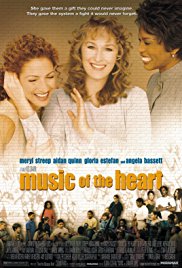EDUCATION
[For additional discussion questions on this topic, see Education section to Learning Guide to “Small Wonders“.
TALENT
1. Did you expect to find talent for playing the violin among poor immigrant children? What does this tell you about talent?
DISABILITIES
2. Why does this film show us a child with disabilities participating in the program? What are the filmmakers trying to tell us?
ROMANTIC RELATIONSHIPS AND DIVORCE/SEPARATION
3. In the film, it appears that the heroine separates from her husband and then moves immediately into a close personal and sexual relationship with another man. What are the risks of this type of “rebound” relationship? What if the man had not turned out to be nurturing to her children?
4. Should the heroine of this film have had sexual intercourse with a man when her children were sleeping in the next room? Would your answer change if the man had been well known to the children and loved by them?
5. Are separation and divorce a matter of fault?
6. Should adults who don’t love each other live together for the sake of the children or because of the sanctity of marriage?
7. Do divorce and separation have anything to do with how much parents love their children or are they about relationships between adults?
8. What are the responsibilities of adults who are divorced or separated and who don’t have custody of their children?
9. Was the heroine right to send her boyfriend away when he would not agree to a committed relationship? Should she have kept him around for companionship and sex until she found another man?
10. In the film, why was it so important to Nick that he spend the night with the boyfriend?
11. What are some of the emotions that children feel when their parents become separated or divorced?
Discussion Questions Relating to Ethical Issues will facilitate the use of this film to teach ethical principles and critical viewing. Additional questions are set out below.
RESPONSIBILITY
(Do what you are supposed to do; Persevere: keep on trying!; Always do your best; Use self-control; Be self-disciplined; Think before you act — consider the consequences; Be accountable for your choices)
CITIZENSHIP
(Do your share to make your school and community better; Cooperate; Stay informed; vote; Be a good neighbor; Obey laws and rules; Respect authority; Protect the environment)



